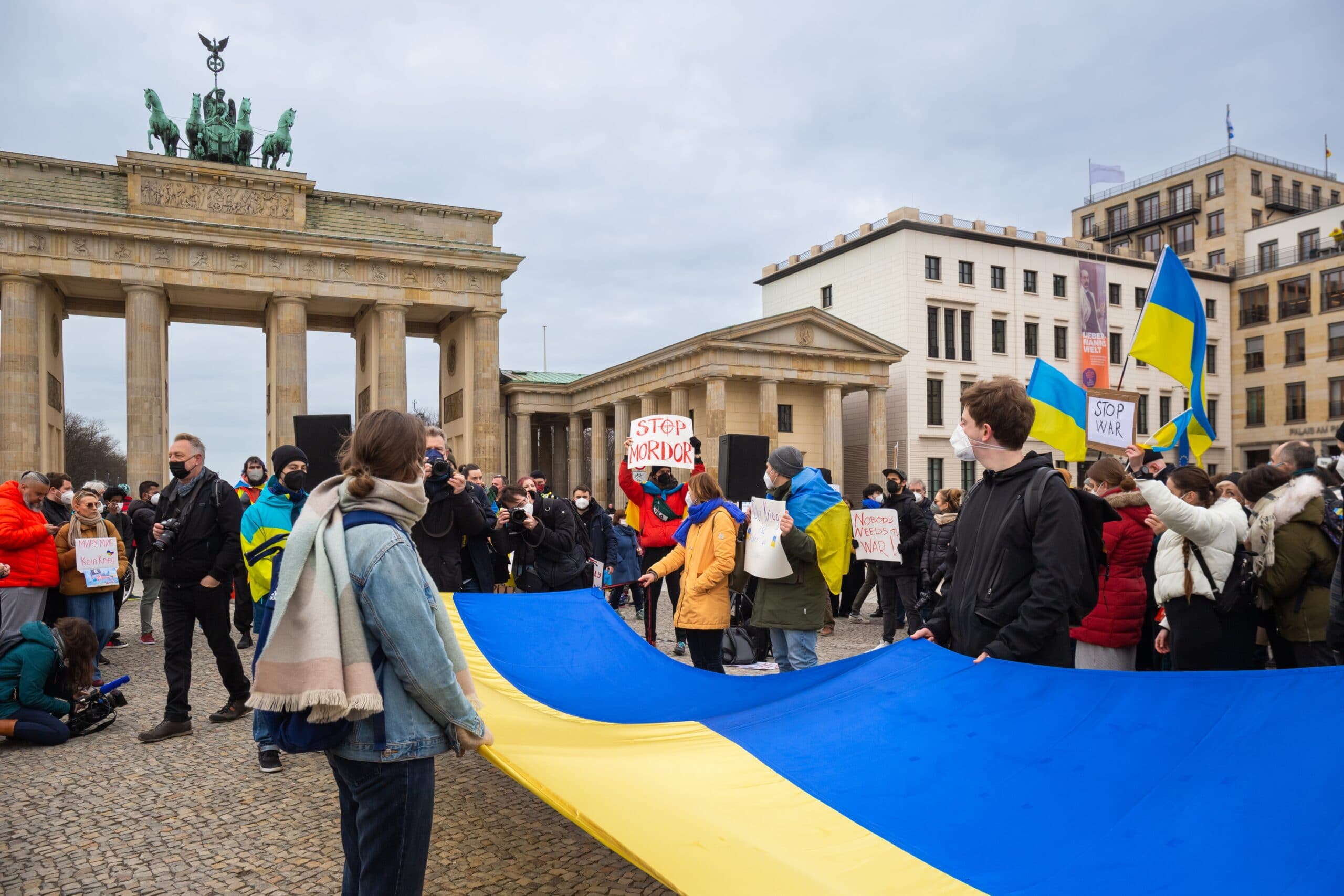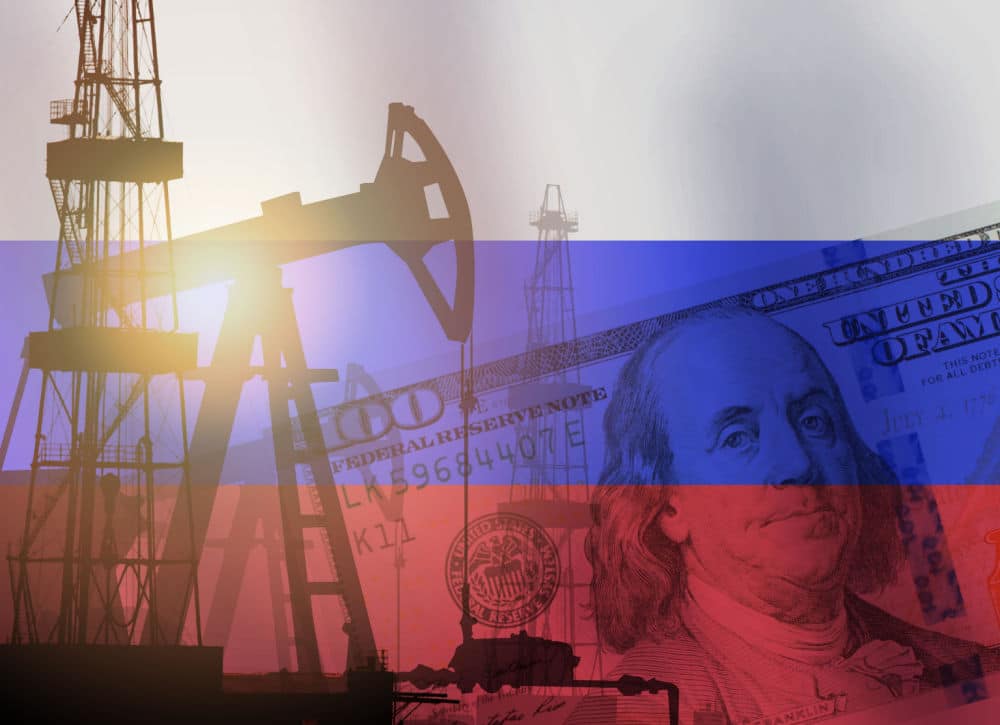1 To Watch
Turkey’s earthquakes raise questions over dam safety and its transboundary implications
February’s disaster has renewed international scrutiny of the safety of Turkey’s dams and the risks they pose to downstream states.
March 29, 2023
It would be difficult but not impossible to replace Russian barrels if Gulf producers choose to play ball

It would be difficult but not impossible to replace Russian barrels if Gulf producers choose to play ball
By Neil Quilliam, Managing Director & Head of Strategy; Alice Gower, Director of Geopolitics & Security
The EU has demonstrated remarkable unity over Russia’s invasion of Ukraine, standing shoulder to shoulder with the US, Canada, Australia and the UK in responding to Russian aggression in more areas than one. EU leaders have mobilised not only diplomatic and materiel support for Kyiv’s war effort, but also introduced a series of sanctions against prominent Russian political figures and businesses. Many European banks and corporates have ceased operations in Russia and divested their interests. Most notably, in early May President of the European Commission Ursula von der Leyen proposed phasing out Russian oil imports (crude and petroleum products) by the end of the year, a move which would strengthen the impact of import bans already implemented by the US and UK.
However, the challenge for the EU in banning Russian oil imports is far greater than it is for the US and UK. Russian crude and petroleum products comprise 26% (3.4m b/d) of the EU’s overall oil petroleum, compared to the US 7% (626,000 b/d) and UK 11% (170,000 b/d). Replacing just over one quarter of total imports by the end of the year will be particularly challenging given that the oil market remains tight and the price stubbornly north of $100 per barrel.
Moreover, oil dependencies on Moscow differ among EU member states, making ending Russian oil imports much more expensive for some. Legacy pipelines such as the Soviet era Druzhba network serve major refineries in former Eastern Bloc countries and supply approximately 750,000 b/d to Europe. For instance, in 2021, Slovakia imported 105,000 b/d (96% of its total imports), Hungary 70,000 b/d (58%) and the Czech Republic 68,000 b/d (50%) from Russia. Hungary, a landlocked country, is reliant upon Russian-owned pipeline networks to deliver relatively inexpensive crude – on favourable terms agreed with Moscow – to meet government commitments to offset utility bill inflation. Sweden, France, Italy and Spain have a much lower dependency on Russian oil (9–13%) and enjoy access to both non-Russian owned energy infrastructure and seaborne deliveries.
The imbalance of dependencies has already begun to challenge EU unity. Finland, Lithuania, Poland, and Sweden have already reduced Russian seaborne crude purchases to nearly zero from approximately 500,000 b/d. Slovakia and the Czech Republic are seeking an exemption from, or extension to, the import ban until 2024 while Hungary has opposed an outright ban on Russian imports.
The European Commission cannot oblige member states to observe an outright energy ban; Article 194 of the Lisbon Treaty affords countries the right to determine the conditions for exploiting their energy resources, the choice between different energy sources and the general structure of their energy supply. As national interests begin to conflict with supranational policies, the unity of purpose that has helped to mobilise the EU will be difficult to uphold unless alternative supplies can be made available before the year’s end. Even then, states such as Hungary will be reluctant to undertake actions that will disrupt long-term relations with Russia.
If the EU’s ban on Russian oil imports is implemented in full by the end 2022, it will struggle to replace Russian barrels.
Russia’s exports to the EU – estimated at 2.2m b/d of crude per year before the war – will not simply be rerouted elsewhere. Although heavily discounted Urals have previously found a home in, for example, China, India and Malaysia, a combination of factors – the threat of US secondary sanctions, Covid-related diminishing demand in China, increasing maritime insurance costs, plus declining domestic demand in Russia as sanctions bite – will force Russia to shut-in a considerable percentage of its production. This will result in an estimated 3–4m Russian b/d leaving the global market, placing significant stress on oil prices and putting pressure on other oil producing countries to increase output to plug the gap.
However, there are very few countries with significant spare capacity: Saudi Arabia, the UAE, Iraq and the US.
Iraq continuously underperforms and the US shale experience has left both oil producers and financiers deeply scarred and unable to respond to demand increases in short order. Iran could, in theory, boost production and increase exports; however, the prospect of Iranian exports increasing beyond 1.5m b/d in the next six months looks extremely slim. The window has all but closed on the JCPOA and stricter enforcement of sanctions on Iran – including on oil – may even restrict the market further.
Realistically, only Saudi Arabia and the UAE can increase production to a substantive degree – by something in the region of 2–2.5m b/d in total, on paper at least. They would face several technical challenges, and in sustaining higher production levels for more than six months, but Saudi Arabia is in fact well-placed to take market share away from Russia following its recent moves into the downstream sector in Poland. Aramco’s ongoing acquisition of the Gdansk refinery will give it access to European markets via Polish energy company PKN Orlen’s refineries and fuel station network in the Czech Republic, Germany, Slovakia and Lithuania – which require about 350,000 b/d.
However, despite direct pressure from the US to increase production to help assuage rising oil prices, Saudi Arabia and the UAE have so far resisted and chosen to keep to the terms of an OPEC+ agreement to limit production until September 2022. According to its terms, OPEC+ members will lift output by 432,000 b/d per month until the end of August (although many members have struggled to meet their quotas); Saudi Arabia reported production of 10.3m b/d in March while the UAE’s output was just below 3m b/d.
But the loss of Russian barrels at the end of the year is likely to bring a different response from the oil giants: when the OPEC+ agreement expires, and if surging oil prices tend towards demand destruction, Saudi Aramco and ADNOC are likely to deploy their spare capacity.
In this scenario, it would be wrong to characterise the Gulf countries’ response as “riding to the EU’s rescue”. Their decision would be driven by commercial goals, such as meeting customer demand, growing market share and, most importantly, keeping the market balanced and the oil price in check. Equally, Europe’s large-scale purchase of Gulf oil to stave off an energy crisis would be short-lived and serve as a fillip to develop alternatives and accelerate the pace of the energy transition.
The EU’s scramble for gas and oil has been characterised by some commentators as the suspension of the energy transition and a return to the hard politics of energy security. Certainly, Russia’s invasion has reminded European leaders that their economies are still dependent upon hydrocarbons – this is clear from the recent increase in high-level official visits to Gulf countries.
However, the proposal to desist from taking Russian oil has been shaped more by ethical considerations than hard-nosed real politick. It has sought to mobilise the union behind the notion of “energy solidarity” – a useful instrument to galvanise member states into action and re-commit to the European project following the disruptive years of Brexit, the Covid-19 pandemic and the increasing debt burden.
As the consequences of taking ethical decisions become increasingly evident – rising energy costs, inflationary and food security pressures, potentially leading to high unemployment and civil unrest – EU member states will be compelled to prioritise their own interests, especially in the energy field. This will lead to a new focus on building domestic energy resilience and curtailing energy dependence, which means that the EU and most member states will pursue the development of renewable energy with renewed vigour, shortening the time horizon for achieving the transition.
Additionally, instead of waiting for the market to deliver solutions, states are more likely to step in and play a greater role in energy provision. The UK’s exit from the EU will facilitate a move away from market-based solutions. State intervention and tighter regulation of the kind seen in France, where the state owns over 80% of EDF – which owns 80% of power assets – will become the norm.
But developing renewable energy sources – such as nuclear capability and substantive offshore wind farms – will take at least a decade, if not more. That leaves member states with little option other than to look to the Gulf for oil and gas to tide them over in the short term while simultaneously working on demand-side management and investing in infrastructure to build out new systems that focus on energy efficacy. Germany, in seeking an LNG deal with Qatar, has already shown that it intends its energy dependence on the Gulf to be temporary. It has objected to Doha’s stipulation of a 20-year contract term on the grounds that it intends to shift to renewable energy sources in a shorter timeframe.
This leaves Gulf producers with a difficult choice: they can capitalise on the Russian oil ban and further invest in Europe’s downstream sector in a bid to build market share – specifically in those countries with a higher dependency on Russian crude; or they can continue to prioritise Asian markets where longer-term demand is more secure and let the EU manage its own energy crisis.
The former route requires betting against Europe’s ambition of transitioning away from hydrocarbons in the short term and entering into what game theorists call “tit-for-tat strategy.” This involves both parties co-operating in the knowledge that there is an end point to the partnership which is indeterminate and a constant source of anxiety for the supplier. If the Gulf states choose the latter, then it risks leaving the oil market undersupplied, leading to demand destruction and a recession, and further accelerating Europe’s march towards energy transition.

1 To Watch
February’s disaster has renewed international scrutiny of the safety of Turkey’s dams and the risks they pose to downstream states.
March 29, 2023

1 To Watch
The Abraham Accords have rapidly increased opportunities for collaboration between signatory states and Israel – a global leader in water management and technology – on improving water and food security.
March 2, 2023

1 To Watch
Fresh EU sanctions and a G7-led price cap on Russian crude have sought to safeguard global oil supplies and prices, but energy markets will struggle to absorb their impact.
December 6, 2022
© Azure Strategy 2024.